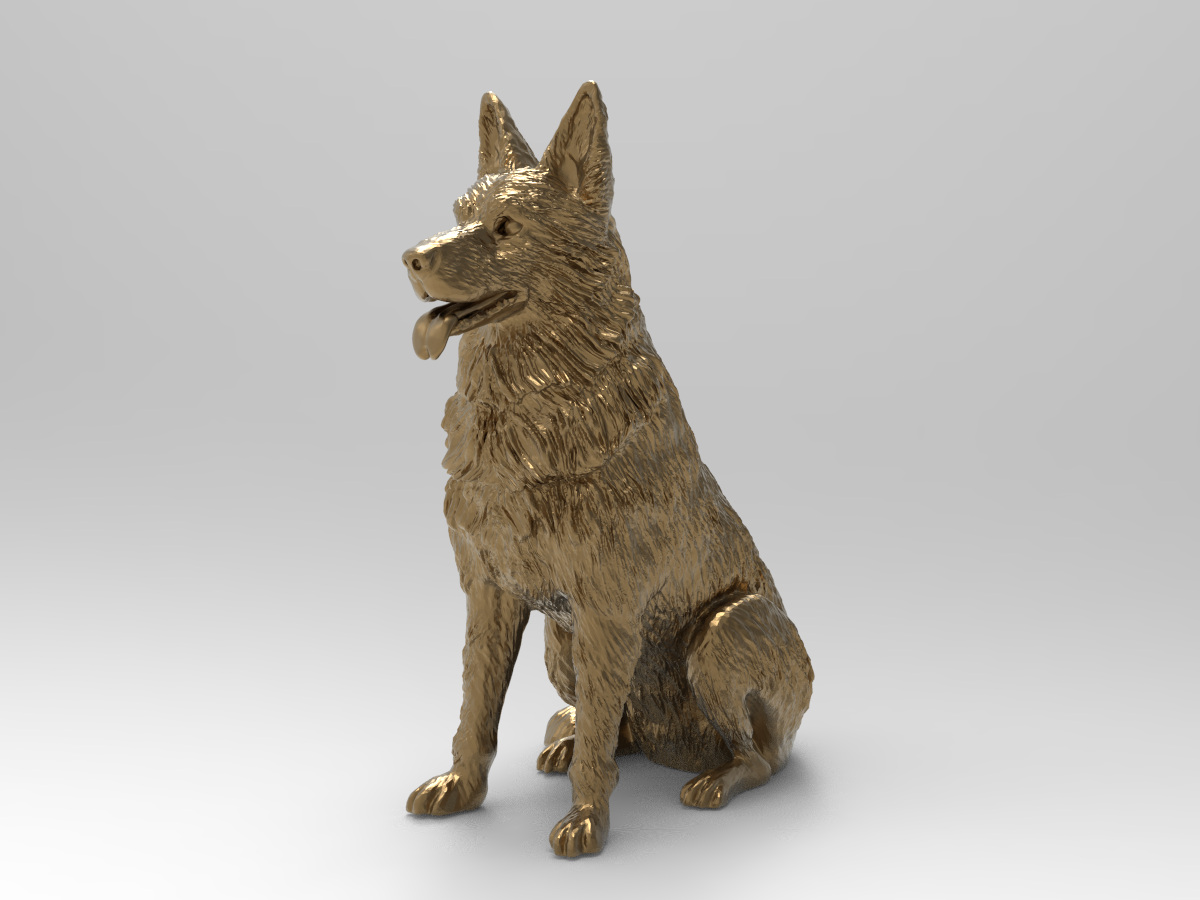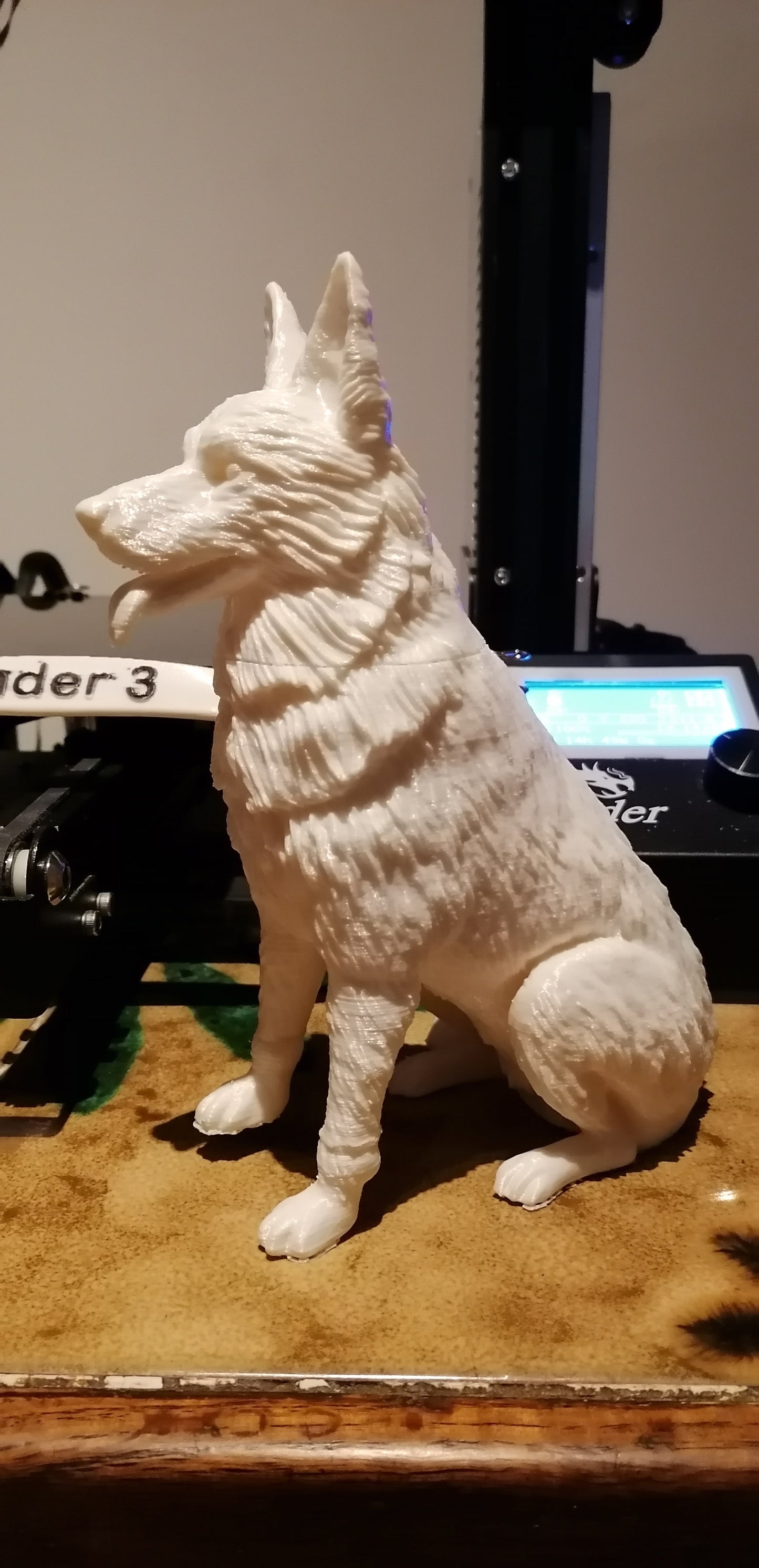8DPrintStore
EAST-EUROPEAN (GERMAN) SHEPHERD DOG
EAST-EUROPEAN (GERMAN) SHEPHERD DOG
Couldn't load pickup availability
The East European Shepherd is larger than a German Shepherd. Males are 66-76 centimetres (26–30 inches) at the withers and weigh 35–60 kg (75-130 lbs), females are 62-72 centimetres (24.5–28 inches) and weigh 30–50 kg (66-110 lbs). Along with a short coat of dense fur, they have strong (but not coarse) bones and well-developed muscles. Their coat is medium in length with a well-developed undercoat. The standard colors for these dogs include well-defined sable gray, sable red and addled that can be saturated to give an almost black-and-tan or black-and-red appearance with a black face mask and solid black.
The head of an East European Shepherd is of a 'wolfish' appearance resting on a long neck in rather massive collar fur and is proportional to the rest of the body. It is triangular and wedge-shaped with a slightly rounded forehead. The muzzle is equal in length to the skull and the lower jaw is well-developed. With large teeth in full complex and powerful jaw muscles, the dog is capable of a very strong hold and scissor-cutting bite. Their ears are medium in size and pricked. Their eyes are medium, oval and dark with close-fitting, well-colored eyelids.
Their backs are straight, strong, wide and long. They are 10-17% longer than their height at withers. The loins are long and wide, well-muscled and slightly arched. Their croup is wide, long and slightly sloping towards the tail. The tail is long, bears thick fur, erected in a form of a sword when the dog is excited. The chest is moderately wide, while the belly is reasonably tucked up. The chests are scimitar in form, reaching the hocks or slightly longer in some cases. The legs are strong and straight and feet are oval and compact. The dog's pace is of a trotter rather than of a skid, sliding just above the ground so typical to other German Shepherds' cousins.
Temperament
The East European Shepherd is balanced, confident and intelligent. VEO is an attentive, active, self-assured dog that appears calm and quiet, but constantly monitors situations and is ready to "turn on" on owner's command. The East European Shepherd has an active defensive reaction, distrusts strangers and can be aggressive when needed, but under no circumstances should it be inclined to unmotivated aggression. VEOs excel as police dogs and personal protection guard dogs or as companions.
East European Shepherds are working dogs and need regular exercise. They were bred for their intelligence and are curious and quick learners. Their ability to withstand extreme climates allows them to live outside as well as inside in a house or an apartment. They perform well as hunting dogs and can work as draught dogs in a group of the same.
Health
One of the main reason for development of VEO was to get rid of hip dysplasia and elbow dysplasia, common diseases in German Shepherds. Due to the large and open nature of their ears, East European Shepherds are not prone to ear infections. They live 10–14 years.
Origin
The breed was created in 1930-1950s as a working dog adapted for service in the Army and police as guard dogs and sniffer dogs in various climatic conditions. The first standard which has formed the breed type of the East European Shepherd was approved in 1964 by the Cynological Council of the Ministry of Agriculture of the USSR. The founder of the first line of the East European type of the German Shepherd was Abrek (owner Osmolovskaya, VRKSS #1). The USSR used only pure-blood German Shepherds in the development of the East European Shepherd and, despite popular misconception, no other breeds were used.
Recognition
The East European Shepherd is recognized by the Russian Kynological Federation (RKF). In the USA, it is registered by the Dog Registry of America and the Continental Kennel Club. By boris3dstudio.
Share






